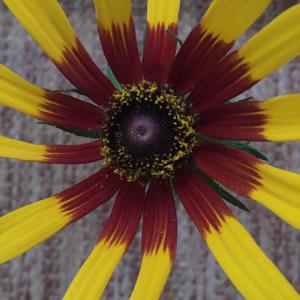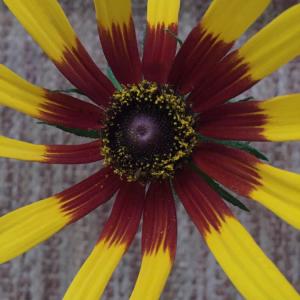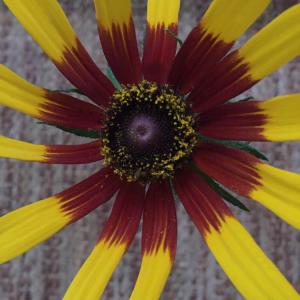文章
Dummer. ゛☀
2017年08月01日

Family - Anacardiaceae
Stems - To +2m tall, woody, multiple from base, erect to ascending, fragrant. Branches glabrous below, becoming puberulent to pilose above in new growth.
Leaves - Alternate, trifoliolate, petiolate, deciduous. Petioles to +/-2cm long, pubescent to glabrous. Leaflets sessile, nearly entire to serrate, lobed or not, to +5cm long, +4cm broad, glabrous to densely pubescent, acute to blunt.
Inflorescence - Catkins produced at the end of the growing season, typically 1-1.5cm long and 4mm in diameter but expanding in the spring before anthesis, often in a compound spike. Flowers appearing before leaves or with the first leaves.
Flowers - Polygamodioecious. Petals 5, yellow, to 3mm long, with sparse cilia internally, free. Stamens 5, erect, yellowish. Anthers, .5mm in diameter, yellow-orange. Style 1, 3-lobed. Ovary surrounded by yellow disk. Sepals 5, united at base. Drupes red, subglobose, 5-7mm in diameter, densely pubescent.
Flowering - March - May.
Habitat - Rocky open woods, thickets, glades, bluffs, knobs, railroads.
Origin - Native to U.S.
Other info. - This is a common and highly variable species with 3 varieties in Missouri and many more to our west. The leaves are variable in shape and pubescence. The twigs and branches are variable in pubescence. I won't go into the varieties here but for the most part they are clearly distinguishable in the field. Consult Steyermark if you wish to separate the plant into its varieties. The leaves and stems of the species are fragrant when crushed or bruised. The fruits, as with most of the genus, can be brewed into a tasty tea. The species is also widely cultivated.
Stems - To +2m tall, woody, multiple from base, erect to ascending, fragrant. Branches glabrous below, becoming puberulent to pilose above in new growth.
Leaves - Alternate, trifoliolate, petiolate, deciduous. Petioles to +/-2cm long, pubescent to glabrous. Leaflets sessile, nearly entire to serrate, lobed or not, to +5cm long, +4cm broad, glabrous to densely pubescent, acute to blunt.

Inflorescence - Catkins produced at the end of the growing season, typically 1-1.5cm long and 4mm in diameter but expanding in the spring before anthesis, often in a compound spike. Flowers appearing before leaves or with the first leaves.

Flowers - Polygamodioecious. Petals 5, yellow, to 3mm long, with sparse cilia internally, free. Stamens 5, erect, yellowish. Anthers, .5mm in diameter, yellow-orange. Style 1, 3-lobed. Ovary surrounded by yellow disk. Sepals 5, united at base. Drupes red, subglobose, 5-7mm in diameter, densely pubescent.

Flowering - March - May.
Habitat - Rocky open woods, thickets, glades, bluffs, knobs, railroads.
Origin - Native to U.S.
Other info. - This is a common and highly variable species with 3 varieties in Missouri and many more to our west. The leaves are variable in shape and pubescence. The twigs and branches are variable in pubescence. I won't go into the varieties here but for the most part they are clearly distinguishable in the field. Consult Steyermark if you wish to separate the plant into its varieties. The leaves and stems of the species are fragrant when crushed or bruised. The fruits, as with most of the genus, can be brewed into a tasty tea. The species is also widely cultivated.
0
0



























